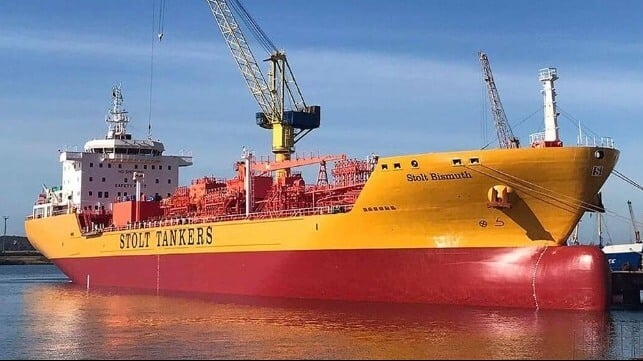Rotterdam and Stolt Test Shore Power for Chemical Tankers

A project is getting underway to explore the feasibility of converting product tankers to shore-based power in ports. As chemical tankers are required to comply with higher safety standards than many other types of vessels, the project is viewed as significant in ports' efforts to expand the use of cold-ironing as the ports work to meet new environmental regulations.
While other segments of the shipping industry have been exploring the use of shore power, so far its application has been applied mostly to cruise ships and ferries as well as some general cargo ships. Recently a few ports have begun to study the expansion, for example in Sweden and the Port of Gothenburg which supported the first tanker to use battery power for in-port navigation and shore power while on dock.
The latest program exploring shore power for chemical tankers is launching at the Port of Rotterdam. Stolt Tankers signed a memorandum of understanding with the Port of Rotterdam Authority and Vopak Botlek to conduct a six-month feasibility study for the use of shore-based power for chemical tankers calling at Vopak’s Botlek terminal.
As chemical tankers are required to comply with higher safety standards than many other types of vessels, Stolt believes the results of the study will be important for the whole chemical tanker industry.
“We have identified several ships with the potential to take part in the trial, which if successful will also present opportunities for our ships calling at ports to plug into power from renewable sources,” said Lucas Vos, President of Stolt Tankers. The goal is while in port to have ships be able to switch off their diesel generators and connect to onshore power, potentially from renewable sources.
The project poses several significant technical hurdles, which make it unique, according to the partners. The feasibility study aims to discover effective solutions to these challenges that can be used to form the basis of an agreed international standard.
The installation of shore-based power for chemical tankers will only be a viable solution if the industry can agree on a single standard says Stolt. Shipowners will need confirmation that their ships can safely and reliably connect to shore power in multiple ports before investing in the necessary ship adjustments, which is why it is essential to design a standardized industry solution in partnership with other leading organizations.
“The availability of shore-based power for our ships has the potential to greatly reduce the use of onboard diesel generators while ships are in port, resulting in a significant reduction of greenhouse gas emissions,” said Vos. “This supports Stolt Tankers’ ambition to reduce its GHG emissions intensity by at least 50 percent by 2030 compared to 2008 levels.
Late in 2021, Stolt Tankers highlighted that it had already reduced its fuel consumption and the resulting CO2 emissions by six percent compared to 2020. Stolt achieved the savings in bunker consumption by improving operational and technical efficiencies and fleet optimization. Speed and trim were optimized according to weather conditions and enhanced maintenance programs, including additional hull and propeller cleaning, which also reduced fuel use. In addition, on several ships, Stolt also installed advanced power-saving propeller fins.
Industry providers of shore power equipment reported in the past few years a resurgence in demand as more ports look to install the connections required to provide shore power. In some ports, for example PortMiami, the implementation of shore power has been slowed by the lack of infrastructure to link the port to the power grid and the power generation capabilities.
